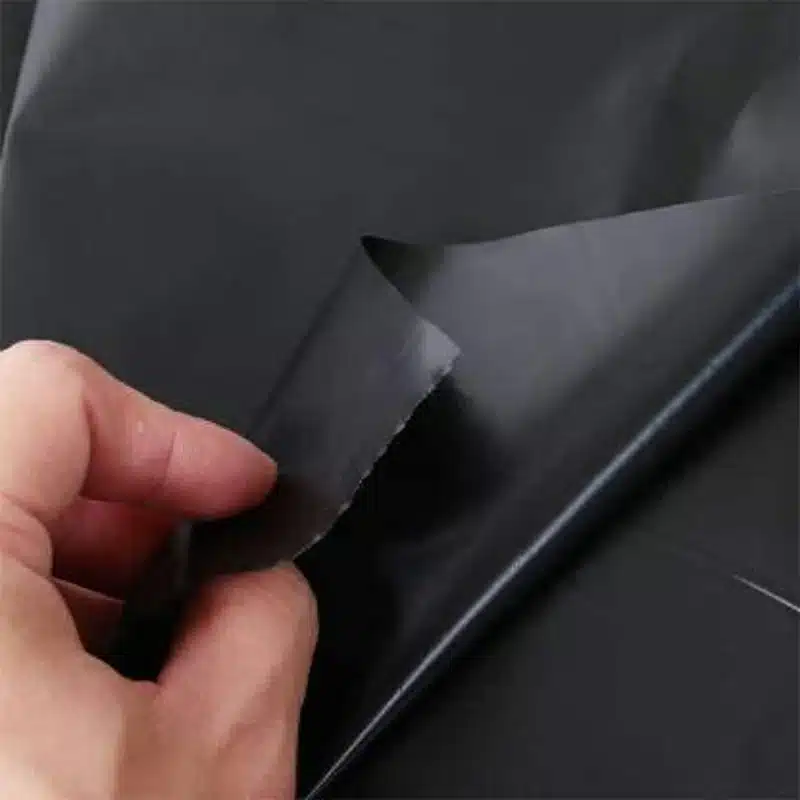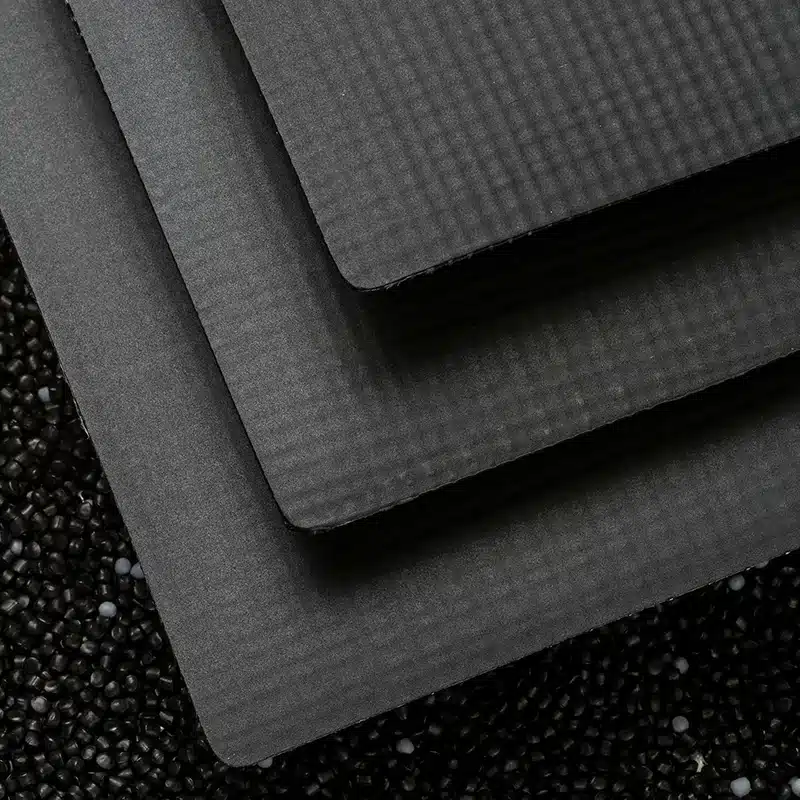+86-159 9860 6917
info@geofantex.com
geofantex@gmail.com
+86-400-8266163-44899
Geomembranes are pivotal in waterproofing technologies, offering robust solutions to protect against moisture and environmental contaminants. As synthetic liners, they play a critical role in various applications, from environmental protection to civil and architectural engineering. This article delves into the effectiveness of geomembranes as waterproof barriers, explores the best types available, examines their installation process, and details the bituminous membrane waterproofing method.
Is Geomembrane Waterproof?
Sealing a geomembrane is a critical process to ensure its effectiveness as a waterproof barrier. The key steps involved in sealing a geomembrane include:
- Surface Preparation: Before sealing, the geomembrane surface must be clean, dry, and free from dust, dirt, oil, or moisture. Any surface contamination or irregularities may compromise seam quality. Cleaning is typically carried out using brushes, cloths, or compressed air.
- Overlap Edges: Adjacent geomembrane sheets should be overlapped by a specified width, generally between 100 mm and 150 mm, to provide adequate bonding area. Proper alignment of the sheets is essential to avoid wrinkles, gaps, or trapped air that could weaken the seal.

What Is the Best Waterproofing Membrane?
- Polyurethane membrane: Best for roofs, terraces, and balconies; offers high flexibility, seamless waterproofing, and strong UV resistance but requires skilled application and higher costs.
- EPDM membrane: Ideal for flat roofs, pond liners, and below-grade waterproofing; provides exceptional durability, long service life, and resistance to UV and ozone, with limited color options.
- PVC membrane: Commonly used in tunnels, underground structures, and roofing systems; lightweight, easy to install, and heat-welded for reliable waterproofing, though it may become brittle over time.
- Bituminous membrane: Suitable for foundations, basements, and roofs; delivers excellent water resistance and cost efficiency through torch-on or self-adhesive systems, but has limited flexibility and needs UV protection.
How Do You Seal a Geomembrane Properly?
Sealing a geomembrane is essential to ensure long-term waterproof performance and system integrity. A properly executed seal prevents leakage, chemical migration, and premature failure. The core steps include:
- Surface Preparation
- Ensure the geomembrane surface is clean, dry, and smooth before sealing.
- Remove dust, dirt, oil, moisture, and loose particles using brushes, clean cloths, or compressed air.
- Any contamination or surface irregularity can compromise seam strength and watertightness.
- Sheet Overlap and Alignment
- Overlap adjacent geomembrane sheets by 100–150 mm to provide sufficient bonding area.
- Carefully align sheets to prevent wrinkles, gaps, or trapped air, which may weaken the seal and create leakage paths.
Proper surface preparation and accurate overlap alignment form the foundation of a reliable geomembrane seal. These steps directly affect seam quality and overall waterproofing performance.
What is the Bituminous Membrane Waterproofing Method?
Bituminous Membrane Waterproofing Method: A Comprehensive Overview
The bituminous membrane waterproofing method is widely used for protecting structures from water infiltration. It involves applying a layer of bitumen-based materials, which form a waterproof barrier on the surface. Bituminous membranes are particularly favored in roofing and foundation applications due to their durability and strong adhesive properties.
Key Features:
- Composition: Bituminous membranes consist of bitumen (asphalt), polymers, and reinforcements such as fiberglass or polyester. These components enhance flexibility, waterproofing, and resistance to environmental conditions.
- Application: The membrane is typically applied in rolls that are either heat-fused or cold-applied to the surface. The process can be completed using two methods: torch-on or self-adhesive techniques.
- Versatility: This method can be applied to both flat and sloped surfaces, making it suitable for various construction projects.
Common Applications:
- Roofing systems: Bituminous membranes are frequently used in flat or low-slope roofs for long-term water resistance.
- Foundations and basements: Protecting underground structures from groundwater and moisture.
- Bridges and tunnels: Ensuring water does not penetrate crucial infrastructure elements.
Advantages:
- Durability: Bituminous membranes are highly resistant to water, UV rays, and chemicals, offering long-term protection.
- Flexibility: The material can stretch without breaking, accommodating structural movements.
- Ease of Installation: Available in rolls, the membranes are easy to install, either through torching or cold applications.
Disadvantages:
- Heat Application: The torch-on method requires careful handling to prevent accidents, as heat is involved.
- Regular Maintenance: Over time, the membrane might need inspection or repairs to maintain waterproof integrity.
The bituminous membrane waterproofing method is a reliable and proven solution for various construction projects where waterproofing is critical. Its strength, flexibility, and resistance to harsh conditions make it a popular choice across the industry.
Geomembranes represent a critical advancement in waterproofing technology, providing effective and reliable solutions across a range of applications. Whether it’s HDPE for pond liners or bituminous membranes for roofs, the choice of membrane should be tailored to the specific environmental and physical demands of the project. Understanding the properties, installation techniques, and applications of geomembranes can guide professionals in achieving the best possible outcomes in waterproofing projects.



Get Free Sample
We’ll respond as soon as possible(within 12 hours)






















